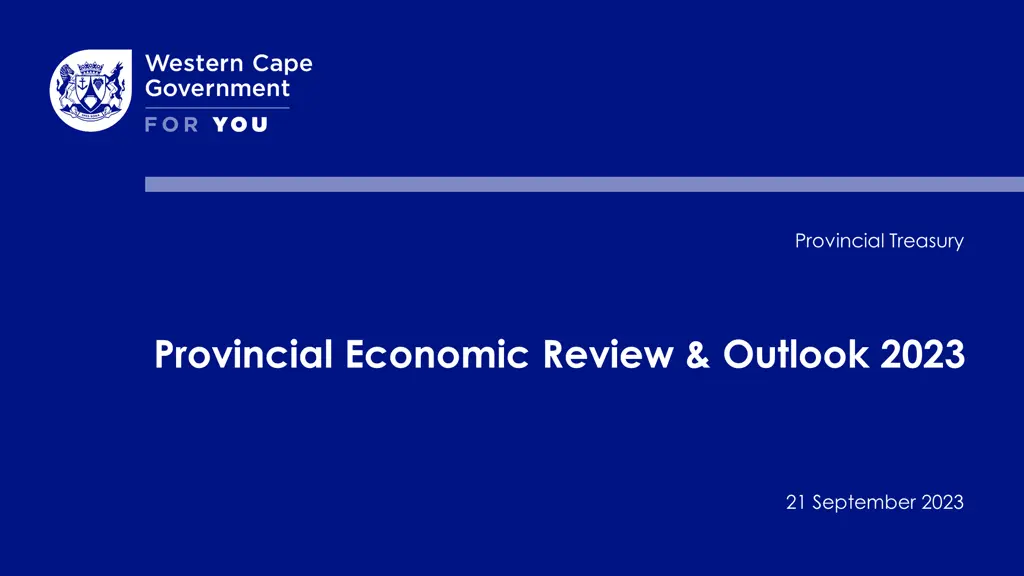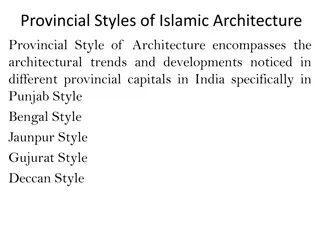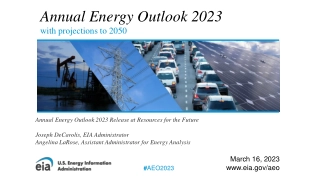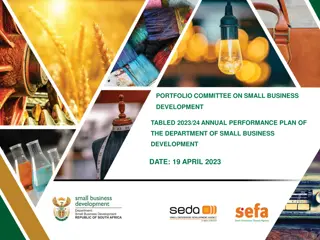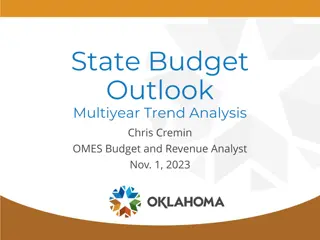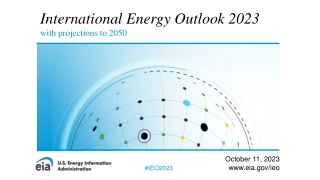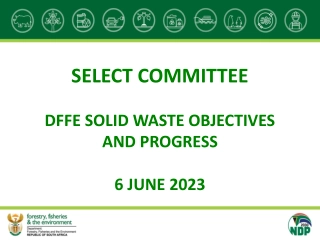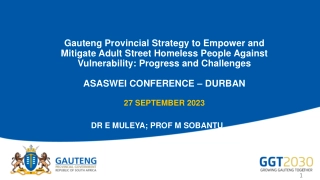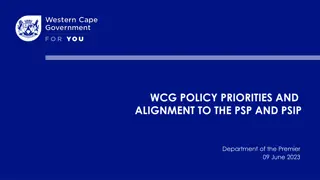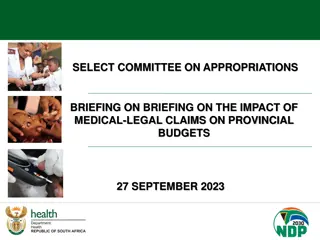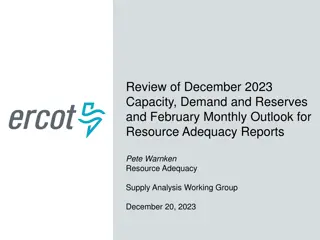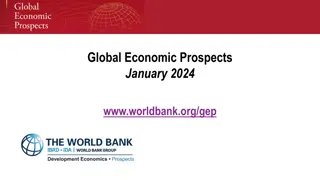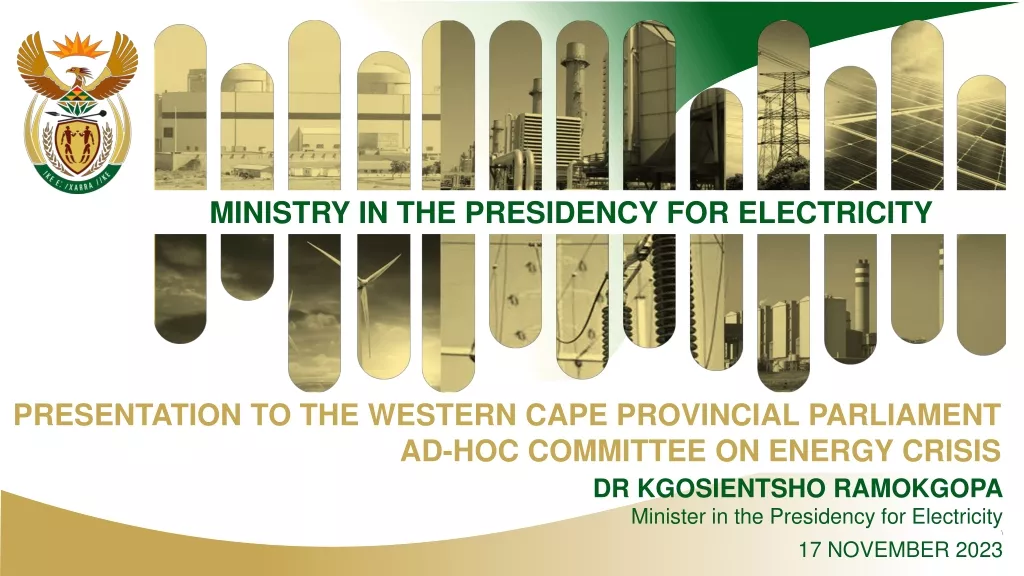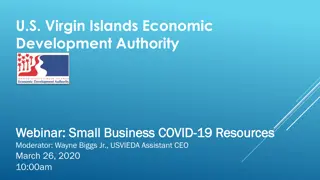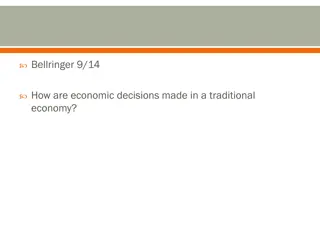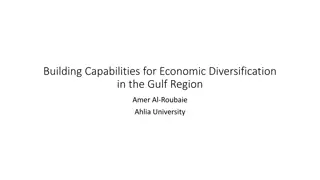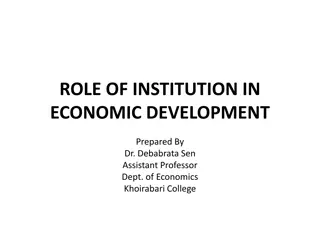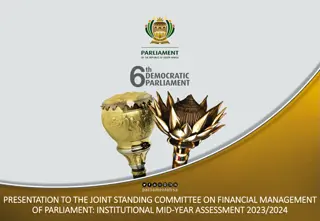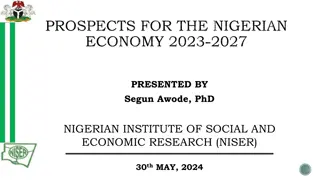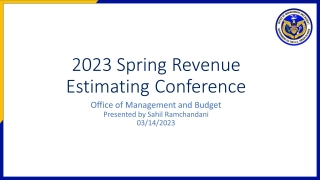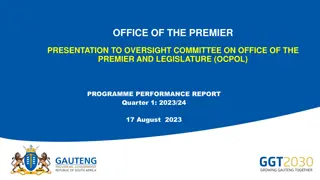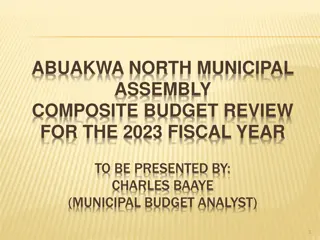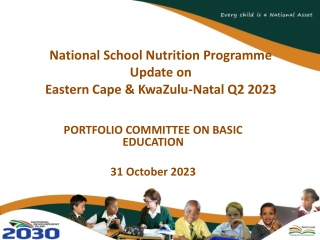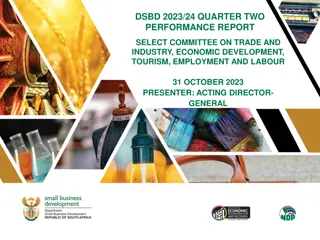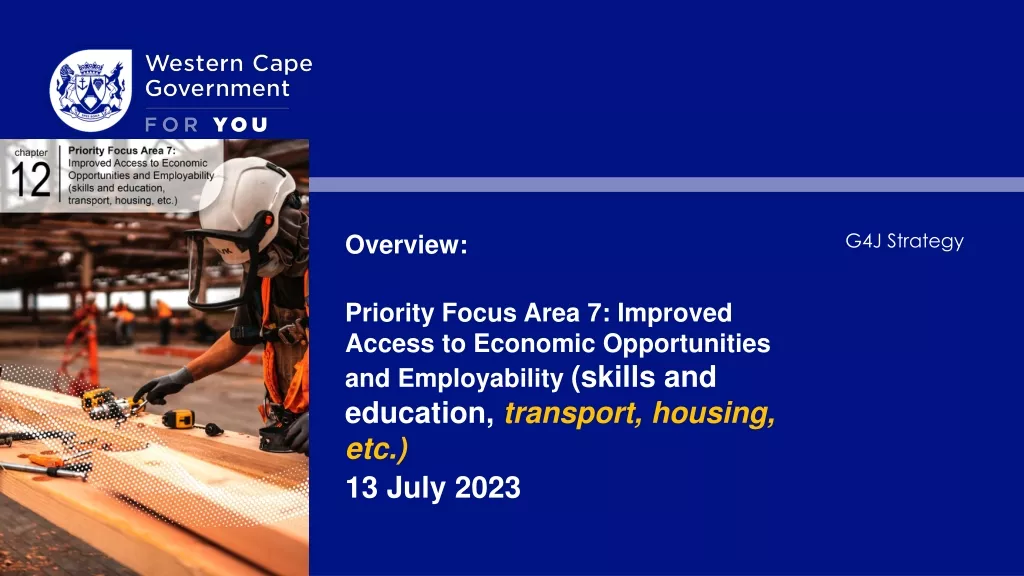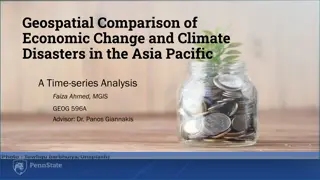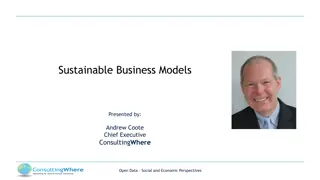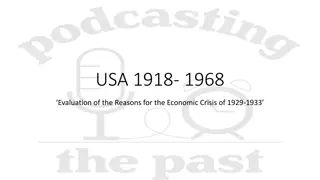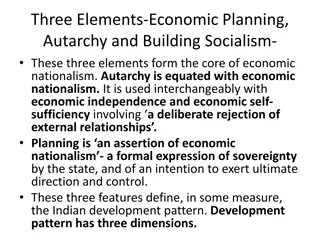Provincial Economic Review & Outlook 2023
A comprehensive review and outlook of the provincial economy, highlighting challenges and opportunities. Covers global and national economic trends, as well as key socio-economic indicators in the Western Cape. Informing policy choices and budget planning.
- Provincial Treasury
- Provincial Economic Review
- employment growth
- economic challenges
- youth unemployment
- economic trends
- budget planning
Download Presentation

Please find below an Image/Link to download the presentation.
The content on the website is provided AS IS for your information and personal use only. It may not be sold, licensed, or shared on other websites without obtaining consent from the author. Download presentation by click this link. If you encounter any issues during the download, it is possible that the publisher has removed the file from their server.
E N D
Presentation Transcript
Provincial Treasury Provincial Economic Review & Outlook 2023 21 September 2023
Introduction The WC economy is getting traction on employment growth, despite stagnant global and national economic growth, compounded by financial pressures and a persistent energy crisis. However, the Western Cape's slowing economy highlights societal challenges, including poverty and crime. The youth, despite their numbers, face significant unemployment, and educational outcomes offer little population, driven by in-migration, exacerbates future resource strains. However, spatially focused anti-crime measures bring hope. respite. The Province s growing Provincial Economic Review & Outlook 2023 2
The PERO kicks off the Provincial budget process Tabling of MTBPS; Adjusted Estimates; and OPMII Special MANCO Tabling of PERO PG MTEC 1 Identifies the policy priorities within each theme, Jobs, Safety and Well-being PERO data informs policy choices Special Manco will inform PG MTEC 1 and MTBPS Translates Special Manco into departmental plans and budgets PERO informs the budget planning and the situational analysis included in APPs Guides policymakers, departments and municipalities on key economic and socioeconomic trends Review and update of the current state of the Global, National and Provincial economies MTBPS sets the economic and fiscal context and framework for the 2024 Budget 20 September 2023 5 17 October 2023 21 November 2023 21 September 2023 Provincial Economic Review & Outlook 2023 3
2023 PERO outline Chapter 1: The Global & National Economy Chapter 2: The Western Cape Economy Chapter 3: The Urgency of Now - Getting young people to work Chapter 4: Demographic Profile Chapter 5: Socio economic profile of the Western Cape
Global and SA economic uncertainty persists & inflationary pressures impacting households Global Economic performance and outlook Share of SA 2022 Exports Tourism Exports Tourism 2022 % % Share of WC 2022 GDP Growth Forecast 2023 % % 2024 % % % 8.8 13.6 8.2 13.7 2.1 1.8 1.0 United States 4.8 4.4 9.1 6.6 4.5 0.8 1.2 Netherlands United Kingdom Namibia 5.1 14.8 6.8 18.1 4.1 0.4 1.0 2.8 2.2 6.5 3.0 4.6 3.5 3.0 9.3 0.5 5.5 0.2 3.0 5.2 4.5 China 7.7 8.8 2.9 15.6 1.8 - 0.3 1.3 Germany The global economic outlook remains uncertain, characterised by sluggish growth, high inflation, and rising debt levels. However, inflation is decreasing but still high in many countries. In China post-pandemic economic recovery is decelerating due to reduced export demand and slow domestic consumption. Global growth is expected to decrease from 3.5 per cent in 2022 to 3.0 per cent in 2023 and 2024. The SA outlook is 0.5 per cent in 2023 , and 1.8 per cent in 2024. Slow growth to negatively impact on unemployment, inequality and tax revenue in South Africa. Provincial Economic Review & Outlook 2023 6
South Africa had the worst energy crisis on record Eskom average electricity price increases and headline inflation in South Africa, 2013 - 2022 Cumulative electricity generated and GDP in South Africa, 2013 - 2022 2022, SA s average electricity generation was 14.8 per cent lower than at the end of 2013. Coal remains the main source of energy production in SA. Steep electricity price hikes in recent years, negatively impacted on inflation, consumer demand, and productivity. Between 2013 to 2022, average electricity prices increased by 139.8 per cent, while headline inflation rose by 56.0 per cent during the same period. Provincial Economic Review & Outlook 2023 7
Headline inflation in South Africa back on track to SARB target Price increases for petrol, food and all items, June 2018 - July 2023 Average inflation and repo rate for South Africa, June 2018 - July 2023 Since November 2021, the SARB increased the repo rate by 475 basis points to a 14 year high of 8.25% in May 2023. Annual headline inflationdecreased to 4.7 per cent in July 2023. Food inflation remained high at 10 per cent at the end of July 2023, contributing to the cost-of-living challenges of South Africans, particularly low-income households. Lower inflation will accommodate lower interest rates, increasing consumer demand and lower required yields to make business ventures profitable. As a result, lower interest rates will boost economic growth, accompanied by lower unemployment and inequality. Provincial Economic Review & Outlook 2023 8
GDP and employment levels in the Western Cape The WC economy has recovered from the 2020 recession by 1Q 2023. Over the past decade, the WC economy expanded by 11.1 per cent, or at an average annual growth rate of 1.1 per cent. Since the first quarter of 2020, GDP grew cumulatively by 0.3 per cent, while employment increased by 6.3 per cent Over this period, the Agriculture sector (37.1%) expanded at the fastest pace followed by the Finance (27.5%) and Government sectors (21.9 per cent). The WC economic outlook: is 0.5 per cent in 2023; 2.1 per cent in 2024 Provincial Economic Review & Outlook 2023 10
National energy crisis has impacted the Province In 2022, Eskom distributed 16.9 per cent less electricity to the WC than in 2013. Load-shedding has a severe impact, with about 9 per cent of the surveyed businesses at high risk of insolvency due to power cuts. (Sustainable Energy Africa) In 2022, the real GDP lost to the WC was estimated at R8.2 billion or 1.3 per cent of total GDP. Provincial Economic Review & Outlook 2023 11
Chapter 3: The Urgency of Now - Getting young people to work
Youth Labour outcomes in the Western Cape Change of unemployment by age cohort in the Western Cape, 1Q 2018 1Q 2023 Youth bulge offers geographic dividend opportunity, however youth has weak employment uptake. Youth labour force participation rate in 1Q 2023 rises from 60.9 per cent to 80.9 per cent, marginally above that for the older age cohorts (74.7%), after adjusting for formal education attendance. 2Q 2023 WC youth unemployment rate (31.2%), significantly higher than total WC unemployment rate for the Province (20.9%). Youth not sharing in employment gains: (1Q 2018 - 1Q 2023), WC had 5.1 per cent growth in employment , but youth experienced 4.4 per cent decline. 1Q 2023: WC youth unemployment at 33.2 per cent is lower than Youth unemployment in SA (46.5%), NC (36.6%), EC (52.4%), FS (51.6%), KZN (43.1%), NW (49.3%), GT (48.1%), MPL (51.0%), LP (44.4%). Provincial Economic Review & Outlook 2023 13
The role of education in employment outcomes Change of employment by educational attainment in the Western Cape, 1Q 2018 1Q 2023 Higher education = lower unemployment rates 1Q 2023: tertiary education (8.0%), completed secondary (20.9%) less than secondary (29.2%) education. Youth s unemployment rate remains significantly higher than older people after accounting for education. 1Q 2023: 14.6 per cent vs 4.8 per cent at tertiary education. Public interventions beyond improved education outcomes (i.e. experience) required to improve youth employment. Between 1Q 2018 and 1Q 2023, Unemployment rates among youth increased relatively more among higher educated youth. Tertiary: 5.9 per cent points to 14.6 per cent Secondary: 7.5 per cent points to 33.4 per cent Less than secondary: 2.8 per cent points to 40.2 per cent Provincial Economic Review & Outlook 2023 14
Spatial employment data supplied by employers through SARS There is relative employment outperformance of Rural districts compared to the Cape Metro (2018 - 2022) Cape Winelands (35.1% employment growth contribution against an employment share of 12.4%); West Coast District (12.1% employment growth contribution against an employment share of 4.6%) Overberg District (9.7% employment growth contribution against an employment share of 3.1%) between 2018 and 2022. Cape 35.8 per cent of total employment growth contribution, despite having a 72.2 per cent share in the Western Cape s total employment Metro, which accounted for only Provincial Economic Review & Outlook 2023 15
Western Cape population is increasing and aging Rapid WC Population Growth [2013 2022]: 18.3 per cent increase Accommodate additional 1.116 million people over the next decade. Driven largely by net in-migration (39.2% of total population growth) WC has a youth bulge. Youth (15 - 34 years) is 16.3 per cent larger than 35 - 54 years. Increase in the share of elderly individuals by 1.1 per cent points since 2014. WC Life expectancy among females (71.7 yrs) higher than males (66.3 yrs), (2021 - 2027) Share Of Age 60+ To Total Population Per Province, 2014 - 2023 Declining fertility rate: 2.01 [2021 2026 expected] 53.5% of the total WC population below the lower bound poverty line in 2022, a decline of 1.9% points from 2020. Provincial Economic Review & Outlook 2023 17
Population growth by race Share of population by race in the Western Cape, 2Q 2018-2Q 2023 Population composition by race changes 2Q 2023: WC population share African: 37% Coloured: 47.3% Indian/Asian: 1.3% White: 14.3% (2Q 2018 -2Q 2023): African (3.9% points) and Indian (0.5% points) population increased its population share, while Coloured (-2.6% points)and white population (-1.7% points) share declined. Net in-migration a significant factor affecting racial composition of WC Provincial Economic Review & Outlook 2023 18
Provincial Economic Review & Outlook 2023 Health services need to adapt to relative older and growing population Number of Public Employed Doctors and Nurses Per Population in The Western Cape, 2013/14 2022/23 Public Health Care Total Headcount and Hospital Patient Day Equivalent in The Western Cape, 2013/14 2022/23 Number of public employed doctors per 100,000 people, increased from 43.4 in 2013/14 to 45.9 in 2022/23. Number of public employed nurses per 100 000 people declined from 204.6 in 2013/14 to 191.4 in 2022/23. Decline in the number of public healthcare facility visits (-23.1%) , and the hospital patient day equivalent (-9.4%) visits from levels reached in 2019/20, through an innovative framework of community-oriented primary care. Provincial Economic Review & Outlook 2023 20
Provincial Economic Review & Outlook 2023 Growing population and the rising demand for education resources Number Of Number Of Schools & Learners in The Western Cape, 2013 & Learners in The Western Cape, 2013 - -2022 Learner Learner- -Teacher Ratio in The Western Cape, 2013 Teacher Ratio in The Western Cape, 2013 - -2022 2022 2022 WC has higher average learner retention rates (92% in 2022) in primary grades compared to high school (72% in 2022). Over the last decade (2013 - 2022), the Western Cape has seen a net decline of 0.5% in the number of schools alongside a substantial 17.8 per cent increase in the number of students. Lower number of schools linked to strategy placing learners in better equipped schools to improve quality of education. Poverty and teacher-learner ratio s remains a significant factors influencing academic performance. As per WC education districts: a greater proportion of no-fee schools, tend to exhibit lower pass rates, While a negative correlation (-0.48) is observed between the learner-teacher ratio (class size) and the bachelor's pass rate (academic performance). Provincial Economic Review & Outlook 2023 21
Provincial Economic Review & Outlook 2023 Crime interventions delivering mixed results, requiring targeted responses Western Cape Crime Trends Per Capita In 5 Crime Categories, 2012/13 Western Cape Crime Trends Per Capita In 5 Crime Categories, 2012/13 2021/22 2021/22 Crime trends in the Western Cape show mixed results. Comparing crime rates per capita in the Western Cape over the past decade. (2012/12-2021/22) Declines Driving under the influence of alcohol or drugs (-68.2%), Drug-related crime (-38.2%), Sexual offenses (-28.6%) Increases Murder (34.2%) and Robbery at residential premises (36.2%) Average Number of Crimes in Western Cape Hotpot Areas, Average Number of Crimes in Western Cape Hotpot Areas, 3Q 4Q 4Q 2019/20 2019/20 4Q2022 4Q2022/23 /23 3Q 2016/2017 2016/2017 3Q2019 3Q2019/20 and /20 and Focused provincial safety interventions in crime hotspot areas are yielding positive returns. Average number of crimes reported in the 13 quarters of LEAP implementation compared to implementation. 13 quarters before LEAP Murder reduced by 27 cases; sexual offences reduced by 30 cases; drug-related crime reduced by 2 425 cases ; driving under the influence of alcohol or drugs reduced by 428 cases. Provincial Economic Review & Outlook 2023 22
Key economic and socio-economic trends impacting on policy Slow economic growth in Western Cape expected, with increased social pressures in poverty, crime, unemployment, inequality. Driven by sluggish and uncertain global economic conditions and binding structural national economic growth constraints related to the energy and logistics crises a slowdown in inflation improved future interest rate prospects; Surging Western Cape population largely drive by net in-migration will impact on future resources, front-line services. WC population is becoming relatively older, will likely lead to increased future health service pressures. High and rising youth unemployment independent of Education outcomes. A youth bulge without demographic dividend. Youth population number could potentially provide youth dividend provided improved employment prospects to the youth. Spatial trends observed (underperformance of employment creation and surging housing demand in Cape Metro; suboptimal health outcomes for in-patient mothers and infants in the Central Karoo). Increased psychiatric admissions and suicide; and slow expansion of education infrastructure (awaiting impact of rapid build programme on infrastructure data) Spatial approach to crime yielded positive returns. Provincial Economic Review & Outlook 2023 24 24
Key findings & Policy implications Relatively lower national budget allocations, accompanied with rapid net in-migrations and increased social pressures expected over the medium-term. WCG will have to embrace improved efficiencies/impact through: 1. Automation and data integration: Improve productivity levels; lower the cost of operations and improve the quality of front-line service delivery, whilst also rapidly improve the accuracy and speed by which data is collected and processed. 2. Spatially targeted approaches: enable policy interventions to be applied at appropriate scale and in areas where most needed. WCG faces significant financing needs to expand service delivery platforms, in the face of diminishing resources, indicating a need to Deepen service delivery partnerships in key service areas Explore long term financing for infrastructure from private sector and development financiers Provincial Economic Review & Outlook 2023 25
Conclusion Faced with budget cuts and rising challenges, the WCG must lean into automation, data integration, and spatial strategies. The future hinges on strategic partnerships and innovative financing to sustain impactful services. 'In the midst of every crisis lies great opportunity.' Let us seize ours. Provincial Economic Review & Outlook 2023 26 26
Thank you TMS Chase
